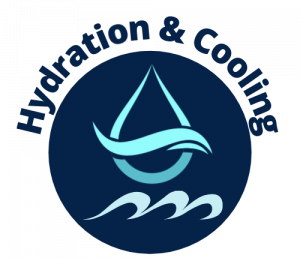Meta Description: Learn how to select the most effective portable misting fans for your athletic program, including coverage requirements, water pressure considerations, and implementation strategies.
_______________________________
Portable Misting Fans for Athletic Fields: Selection Guide
In the battle against heat-related athletic injuries, portable misting fans have emerged as a game-changing technology. These systems leverage evaporative cooling to significantly reduce ambient temperatures in targeted areas, creating safe recovery zones for athletes during intense training or competition. When properly implemented alongside comprehensive hydration strategies, misting systems can reduce the risk of heat-related illness while enhancing performance recovery.
However, not all misting technologies are created equal. The market includes everything from consumer-grade “patio misters” to sophisticated high-pressure systems designed specifically for athletic applications. Understanding the key differences is essential for athletic directors, coaches, and equipment managers making investments in heat safety infrastructure.
This guide walks you through the technical considerations, implementation strategies, and maintenance requirements for effectively deploying misting fan technology in athletic environments.
Understanding Misting Technology
The effectiveness of misting systems comes down to their ability to create proper atomization—converting water into micro-fine particles that immediately evaporate in the air rather than wetting athletes and equipment. This evaporation process is what creates the cooling effect, and it’s determined primarily by operating pressure:
Pressure Classification Systems
- Low-Pressure Systems (40-100 PSI): These consumer-grade systems produce larger water droplets that don’t fully evaporate, creating wet conditions. They provide minimal cooling and are generally unsuitable for athletic applications.
- Medium-Pressure Systems (100-500 PSI): These create smaller water particles with partial evaporation, providing moderate cooling with some residual moisture.
- High-Pressure Systems (500-1000+ PSI): Professional-grade systems producing microscopic water particles (under 10 microns) that flash-evaporate, delivering maximum cooling with minimal wetness.
For athletic applications, high-pressure systems are strongly recommended, as they provide effective cooling without creating slipping hazards or soaking equipment and uniforms.
Key Selection Criteria
Coverage Area Requirements
Determining your cooling zone requirements is the first step in system selection:
- Small team zones (15-20 athletes): 18-24″ fan with 500+ PSI system
- Position group zones (5-10 athletes): 16-18″ fan with 500+ PSI system
- Full team sidelines (30+ athletes): Multiple 24-30″ fans with 1000+ PSI system
Fan diameter and misting pressure together determine effective coverage area. Larger fans distribute mist across wider areas, while higher pressure systems create finer particles that evaporate more effectively.
Water Supply Considerations
Misting systems require clean water sources and may include:
- Direct-connect systems: Attach to standard garden hoses but require specific water pressure ranges
- Integrated tank systems: Include onboard water reservoirs ranging from 10-40 gallons
- Hybrid systems: Offer both direct connection and reservoir options for maximum flexibility
For remote fields without water access, self-contained tank systems provide the most flexibility, though they require refilling during extended use.
Mobility and Durability Features
Athletic environments demand specific construction features:
- All-terrain wheels: Capable of traversing grass, artificial turf, track surfaces, and pavement
- Weather-resistant components: UV-stabilized materials and corrosion-resistant metals
- Impact-resistant construction: Reinforced frames and protected components
- Quick-disconnect fittings: Allowing rapid setup and breakdown between practice sessions
Power Supply Options
Consider available power sources when selecting systems:
- Standard electrical (120v): Most common for permanent installations but requires access to outlets
- Battery-powered: Provides 2-8 hours of operation depending on battery capacity
- Generator-compatible: Can operate from portable power sources for remote locations
Implementation Strategies
Creating Effective Cooling Zones
Strategic positioning maximizes cooling effectiveness:
- Position fans to create cross-breeze patterns when using multiple units
- Integrate with shade structures to compound cooling effects
- Create designated recovery areas combining misting, hydration stations, and seating
- Consider portable enclosures for maximum cooling in extreme conditions
Mobile Deployment Approaches
Effective programs often implement rolling deployment strategies:
- Position systems at rotation stations during circuit training
- Create mobile cooling units that follow team movements during practice
- Establish cooling zones at exit points from high-intensity drill areas
- Deploy systems based on WBGT readings, increasing coverage as conditions worsen
Maintenance Requirements
Proper maintenance ensures consistent operation:
- Daily flushing of systems to prevent mineral buildup
- Regular inspection of nozzles for clogging or damage
- Periodic filter cleaning or replacement
- Seasonal maintenance including winterization in cold climates
Professional-grade systems include replaceable components, making field repairs possible without replacing entire units.
Elevate Your Heat Safety Program
At Hydration & Cooling Sports Equipment, we specialize in high-pressure misting systems designed specifically for athletic applications. Our products include features requested by coaches and trainers, with durability that stands up to daily use in demanding athletic environments.
Contact our cooling specialists for recommendations tailored to your specific facility layout, team size, and environmental conditions.
